All about shelving bumpers
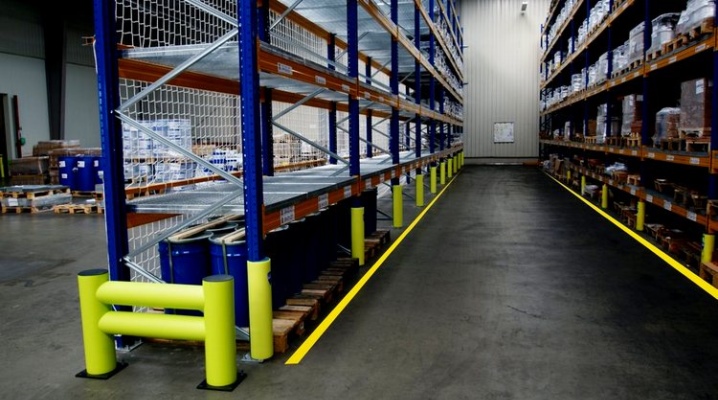
Massive racks are often used in various industrial plants. Such storage systems allow the most compact placement of a large number of various products. To ensure the greatest stability and reliability of such structures, special bumpers are used. Today we will talk about what features such devices have, what materials they are made of.
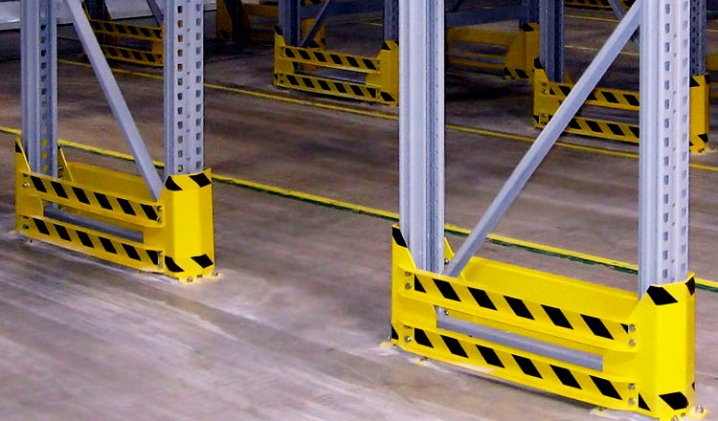
Peculiarities
Shelving bumpers are robust and reliable curved-shaped protective structures. They can have different heights. Often they are mounted together with the entire storage system.
As a rule, these devices are equipped with one or more rollers. In specialized stores, you can find similar products in different price categories.
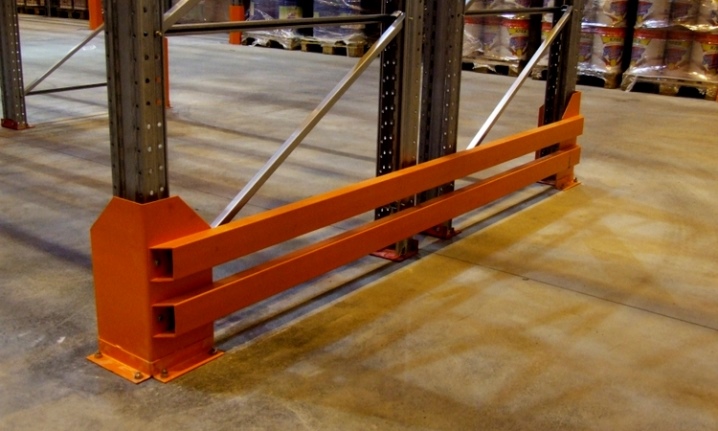
For convenient and quick installation, all such structures have special holes in the bottom of the flat base through which, with the help of anchor fasteners, they are fixed to the floor covering. This makes it possible to quickly mount and dismantle fenders indoors. Most often, finished products are additionally coated with special powder substances that prevent their destruction under the influence of dampness, too high or low temperatures, and various types of contaminants.
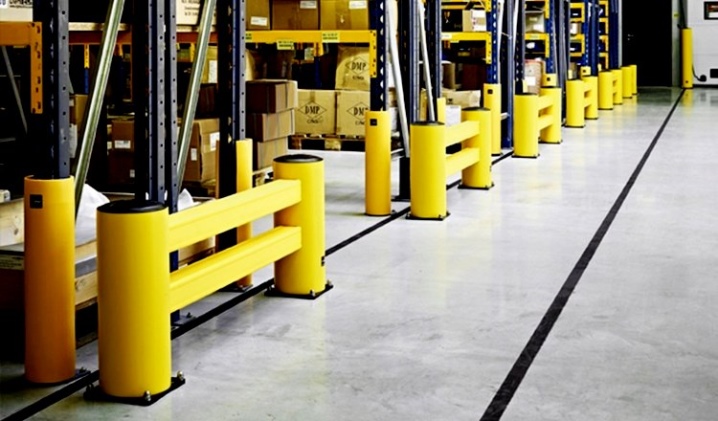
Advantages and disadvantages
Shelving bumpers have a number of advantages:
- have high strength indicators;
- able to withstand heavy loads;
- low risk of material damage due to damage to racks or occupational injuries;
- prevent the stored products from falling from the shelves;
- differ in relatively low cost, available to every consumer;
- provided with the ability to quickly change the deformed bump stop for a new one at minimal cost.
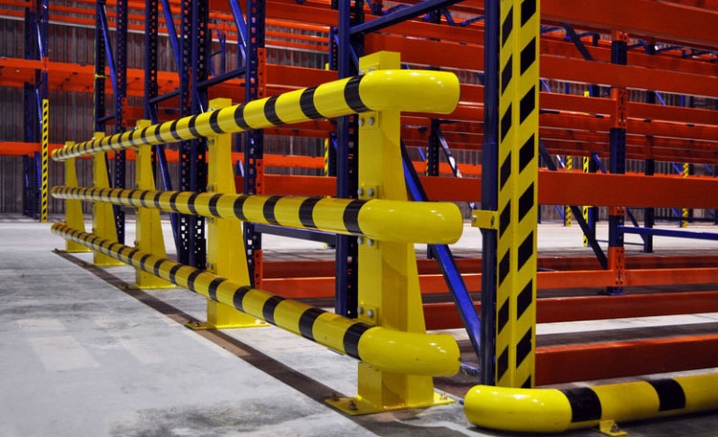
Such products have practically no drawbacks.
It can only be noted that some types of bumpers (wood models) are not able to withstand significant loads, so they are often used for home shelving.
Species overview
The described protective shelving devices can be classified into several separate categories, depending on the design features.
- Corner models. These types of bumpers are designed to reliably protect the corner bearing elements of the racks. In case of careless movement of loading equipment, such bumpers will take on the main load.
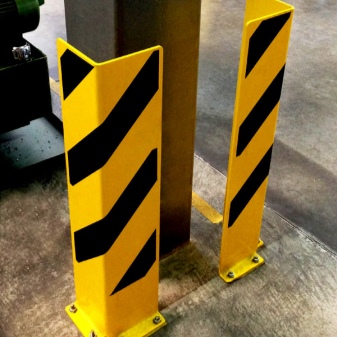
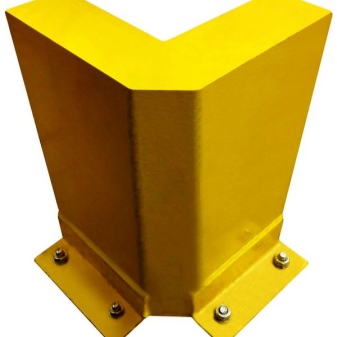
- Frontal. These options cover the base of the rack frame system from three sides at the same time, therefore, compared with the previous version, front fenders are considered more reliable protection of rack storage devices.
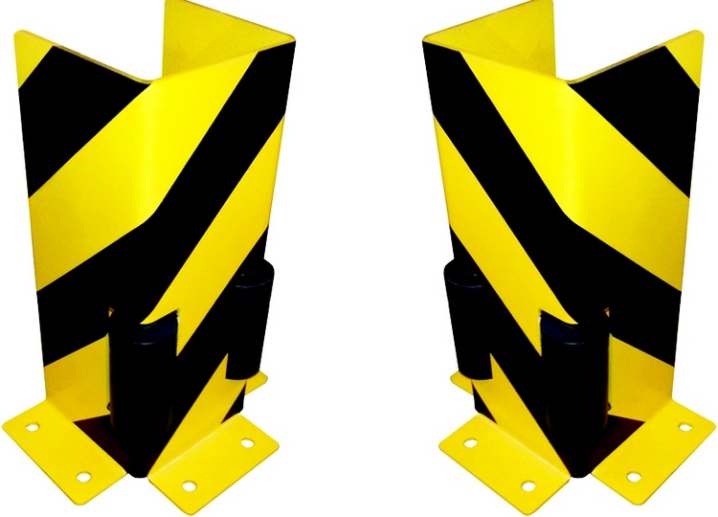
- End. And this type of bumpers protects the end sides of the rack frame from mechanical damage and deformation. They include two corner or end pieces that are connected to each other using a large and strong beam. This option is more reliable than both options mentioned above.
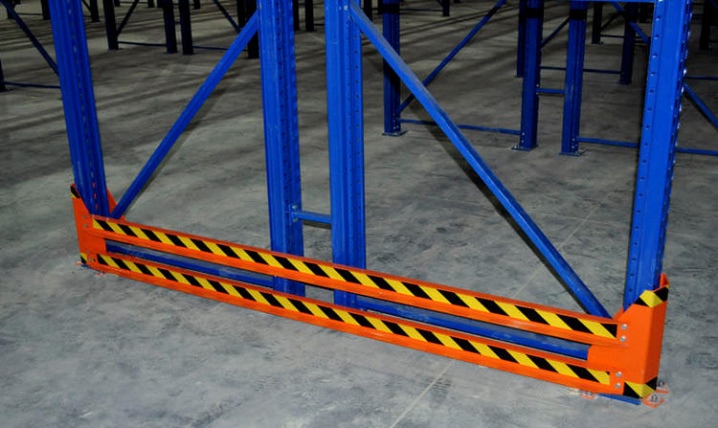
Materials (edit)
Bumpers for shelving may differ from each other in the material of manufacture. Let's separately highlight the most common models.
- Metallic. Such supporting structures have the greatest strength, durability and reliability. They are most often used to ensure the stability of such structures.Metal options are anchored to the flooring. Mostly they are made of a steel base, which undergoes preliminary thorough processing, including special anti-corrosion agents.
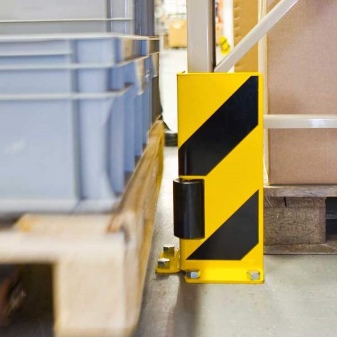
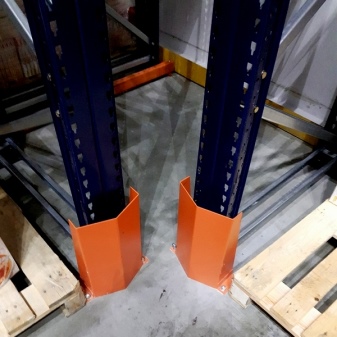
- Plastic. These models of bumpers provide good protection of the racks due to their high resilience. For the production of such products, mainly porous materials are used. Plastic elements are fixed to the rack itself, easily dampening possible shock effects due to compression.
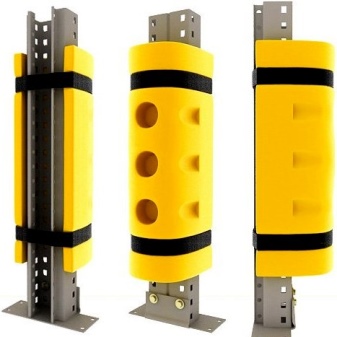

- Wooden. Wood bumpers are not used as often to protect shelves as metal or plastic ones. They will only be suitable for small shelving systems that are not subject to excessive weight loads. Otherwise, these products will be useless, since they themselves cannot withstand heavy loads. But in any case, during the manufacturing process, they must undergo careful processing, and their surface must be impregnated with special protective compounds against fungi and other lesions.
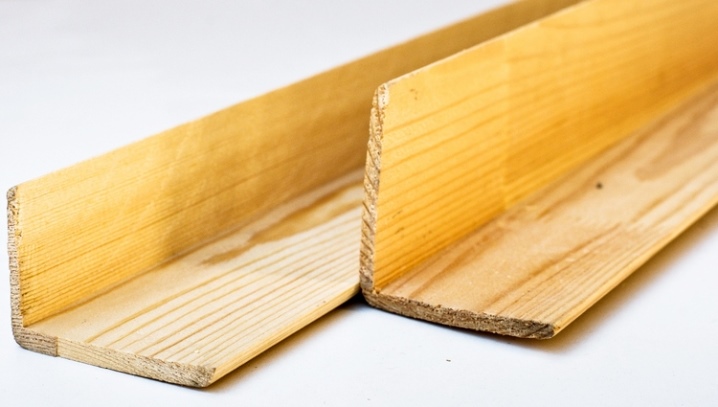
Application
Fenders are mainly used in large warehouses where it is necessary to provide reliable protection of the racks during the movement of loading machines. Besides, they are often used in large shopping malls to prevent damage to goods in cases of collisions between carts and shelving units.
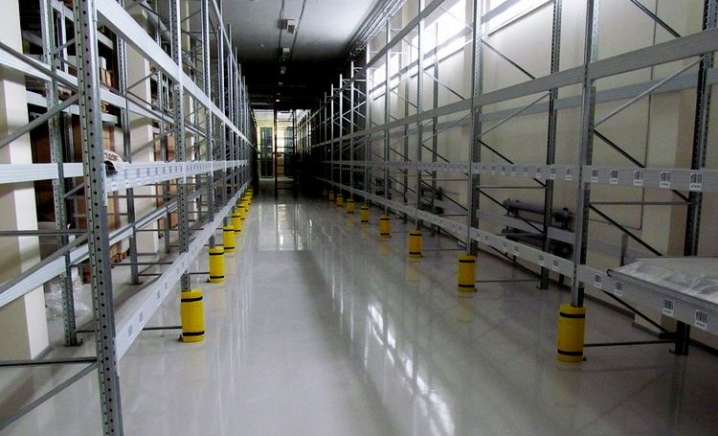
Recently, some designs of rack bumpers have been widely used to protect the facades of buildings in parking spaces from possible collisions of cars. Sometimes they are installed in ordinary residential courtyards.
For more information about shelving bumpers, see the video below.













The comment was sent successfully.